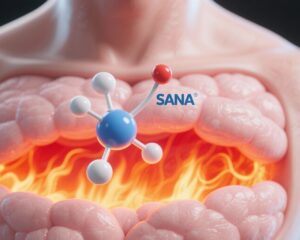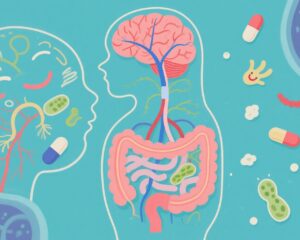Study Background and Disease Burden
Obesity in older adults exacerbates the natural decline in metabolic regulation and physical function, contributing to heightened frailty, insulin resistance, and increased risk of type 2 diabetes and cardiovascular disease. Age-associated changes compounded by adiposity result in diminished insulin sensitivity and impaired insulin secretion. While diet-induced weight loss has been proven beneficial for metabolic health and physical functionality, the differential effects of exercise modalities—specifically aerobic versus resistance training—when combined with diet on insulin secretion and relevant mediators in this vulnerable population remain inadequately characterized. Understanding the mechanistic mediators may guide tailored lifestyle interventions for obese older adults, optimizing both metabolic and functional outcomes.
Study Design
This randomized controlled trial enrolled 160 older adults with obesity and frailty to investigate the effects of three exercise modalities— aerobic exercise (AEX), resistance exercise (REX), and their combination (COMB)—all paired with an approximately 10% diet-induced weight loss over six months. Participants were randomized into AEX, REX, COMB, or control groups. Primary endpoints included changes in insulin secretion and sensitivity, assessed via the Disposition Index (DI) during oral glucose tolerance testing and Homeostatic Model Assessment for Insulin Resistance (HOMA-IR), respectively. Secondary endpoints assessed body composition (truncal fat and appendicular lean mass by DXA), circulating levels of ciliary neurotrophic factor (CNTF), its receptor (CNTFRα), and insulin-like growth factor-1 (IGF-1) via ELISA, and gene expression of CNTF and CNTFRα in vastus lateralis muscle tissue using quantitative PCR. Additional measures included physical performance (Physical Performance Test scores), muscle strength, maximal oxygen consumption (VO2peak), MRI-derived body composition metrics, and plasma leptin and adiponectin levels. Stepwise multiple regression analyses identified predictors of changes in CNTF, insulin secretion, and physical function.
Key Findings
Body composition analysis revealed that truncal fat mass decreased significantly more in the aerobic (AEX) and combination exercise (COMB) groups compared to resistance exercise (REX) alone (p=0.001). Meanwhile, appendicular lean mass—critical for maintaining functional independence—was better preserved in the REX group (p=0.001), underscoring the anabolic benefits of resistance training. Metabolically, insulin sensitivity improved most markedly in the COMB group, as reflected by HOMA-IR (p < 0.001 vs. AEX and REX), while insulin secretion, measured by DI, improved significantly only in the COMB group relative to controls (p=0.04), suggesting enhanced beta-cell function with combined modalities.
Regarding neurotrophic factors, plasma CNTF levels declined across all exercised groups compared with controls (p < 0.001), but only the COMB group preserved circulating CNTFRα levels (p=0.003) and showed the most substantial decrease in the CNTF/CNTFRα ratio. However, mRNA expression of CNTF and its receptor in the vastus lateralis muscle did not differ across groups, indicating systemic rather than local muscle-level regulatory changes. IGF-1, a key mediator of muscle growth and metabolic regulation, increased significantly in the REX and COMB groups (p=0.004), consistent with anabolic adaptations.
Statistical modeling identified changes in visceral fat volume and plasma leptin as key contributors to nearly half of plasma CNTF variation (49.6%, p < 0.009). Importantly, changes in CNTFRα levels strongly predicted alterations in insulin secretion (DI), explaining 38.3% of its variance in conjunction with intermuscular fat changes (p=0.004). Additionally, combined changes in CNTFRα, intermuscular fat, muscle strength, VO2peak, and IGF-1 accounted for 61.2% of variability in physical performance (PPT scores) (p=0.03), suggesting interrelated pathways linking neurotrophic signaling, metabolic health, and physical function.
Expert Commentary
This study elucidates the synergistic benefits of combining aerobic and resistance exercise with diet-induced weight loss in an older obese cohort, producing superior improvements in insulin sensitivity and secretion compared to either modality alone. Preservation of circulating CNTFRα and augmentation of IGF-1 suggest these molecular pathways are important mediators of enhanced metabolic and functional outcomes. The finding that systemic, but not muscular, CNTF and CNTFRα expression change implies endocrine or paracrine mechanisms beyond local muscle expression modulate these effects.
These results align with emerging concepts that neurotrophic factors play roles in metabolic regulation, potentially via effects on pancreatic islets or central nervous system pathways modulating energy balance and insulin secretion. IGF-1 increase with resistance and combined training supports its established role in muscle anabolism and metabolic health.
Limitations include the trial’s moderate duration, which may not capture long-term sustainability, and the absence of mechanistic tissue analyses beyond skeletal muscle. The study population’s frailty and obesity limit generalizability to healthier cohorts but highlight clinical relevance for high-risk older adults.
Conclusion
In summary, lifestyle intervention combining aerobic and resistance exercise with diet-induced weight loss in frail older adults with obesity yields the greatest benefits in insulin secretion, insulin sensitivity, and physical function. Preservation of circulating CNTFRα and increased IGF-1 levels emerge as potential biomarkers and mediators of these improvements. These data support incorporation of combined exercise modalities in obesity treatment protocols for older adults and prompt further research into CNTF/CNTFRα and IGF-1 pathways as therapeutic targets. Optimizing lifestyle interventions that harness these neuroendocrine mediators could substantially reduce cardiometabolic risk and frailty progression.
References
Colleluori G, Viola V, Bathina S, Armamento-Villareal R, Qualls C, Giordano A, Villareal DT. Effect of aerobic or resistance exercise, or both on insulin secretion, ciliary neurotrophic factor, and insulin-like growth factor-1 in dieting older adults with obesity. Clin Nutr. 2025 Aug;51:50-62. doi: 10.1016/j.clnu.2025.05.016. Epub 2025 May 28. PMID: 40527119; PMCID: PMC12241963.
Kalyani RR, Corriere M, Ferrucci L. Age-related and disease-related muscle loss: the effect of diabetes, obesity, and other diseases. Lancet Diabetes Endocrinol. 2014 Oct;2(10):819-29. doi: 10.1016/S2213-8587(14)70034-8.
Villareal DT, Aguirre L, Gurney AB, Waters DL, Sinacore DR, Colombo E, Armamento-Villareal R. Aerobic or Resistance Exercise, or Both, in Dieting Obese Older Adults. N Engl J Med. 2017 Mar 2;376(20):1943-1955. doi: 10.1056/NEJMoa1616338.


